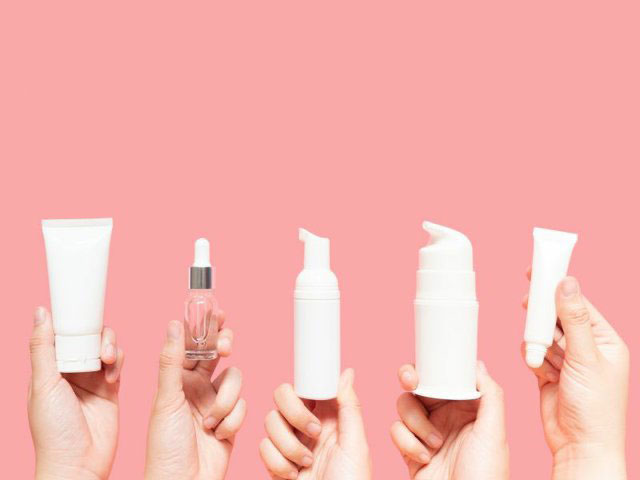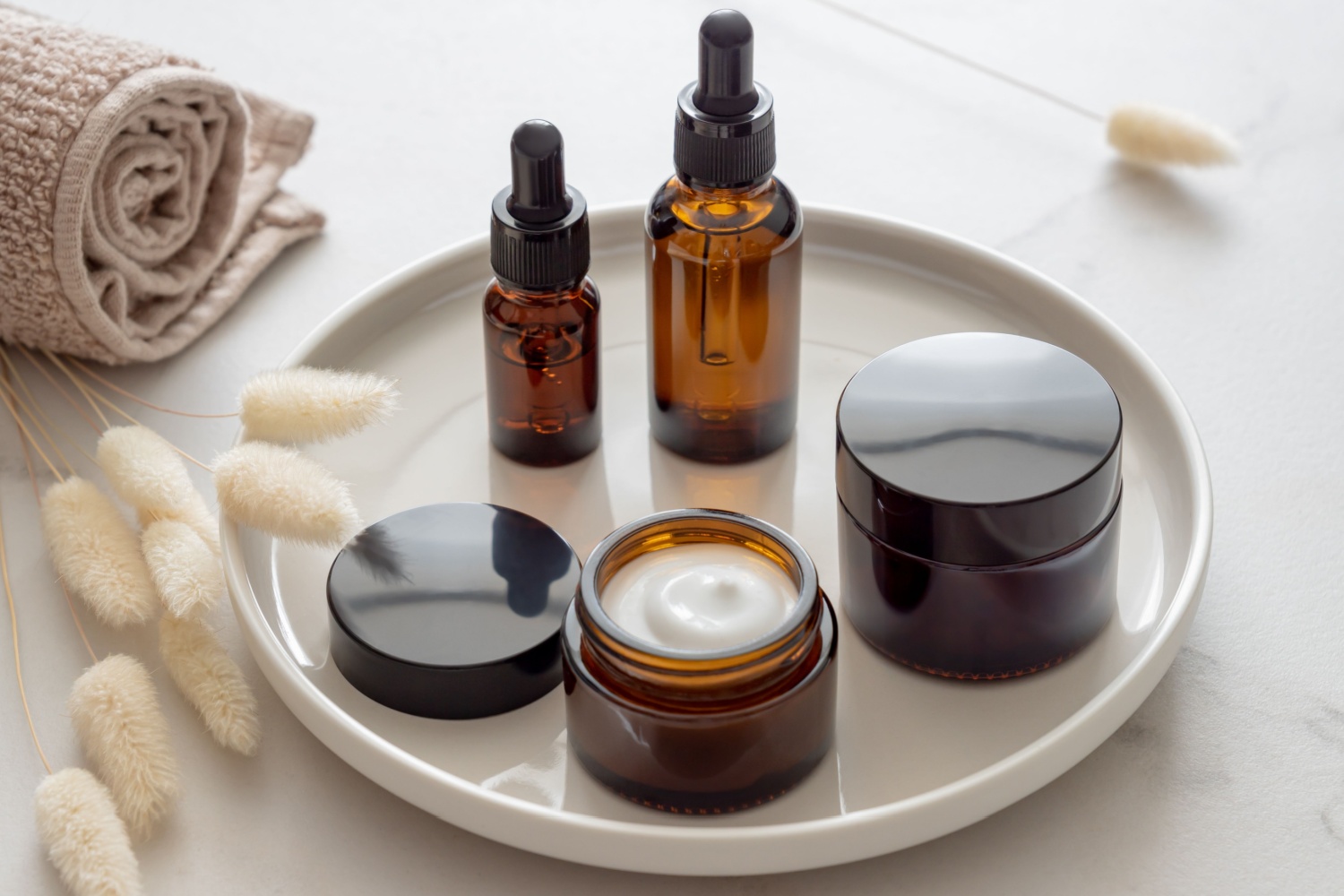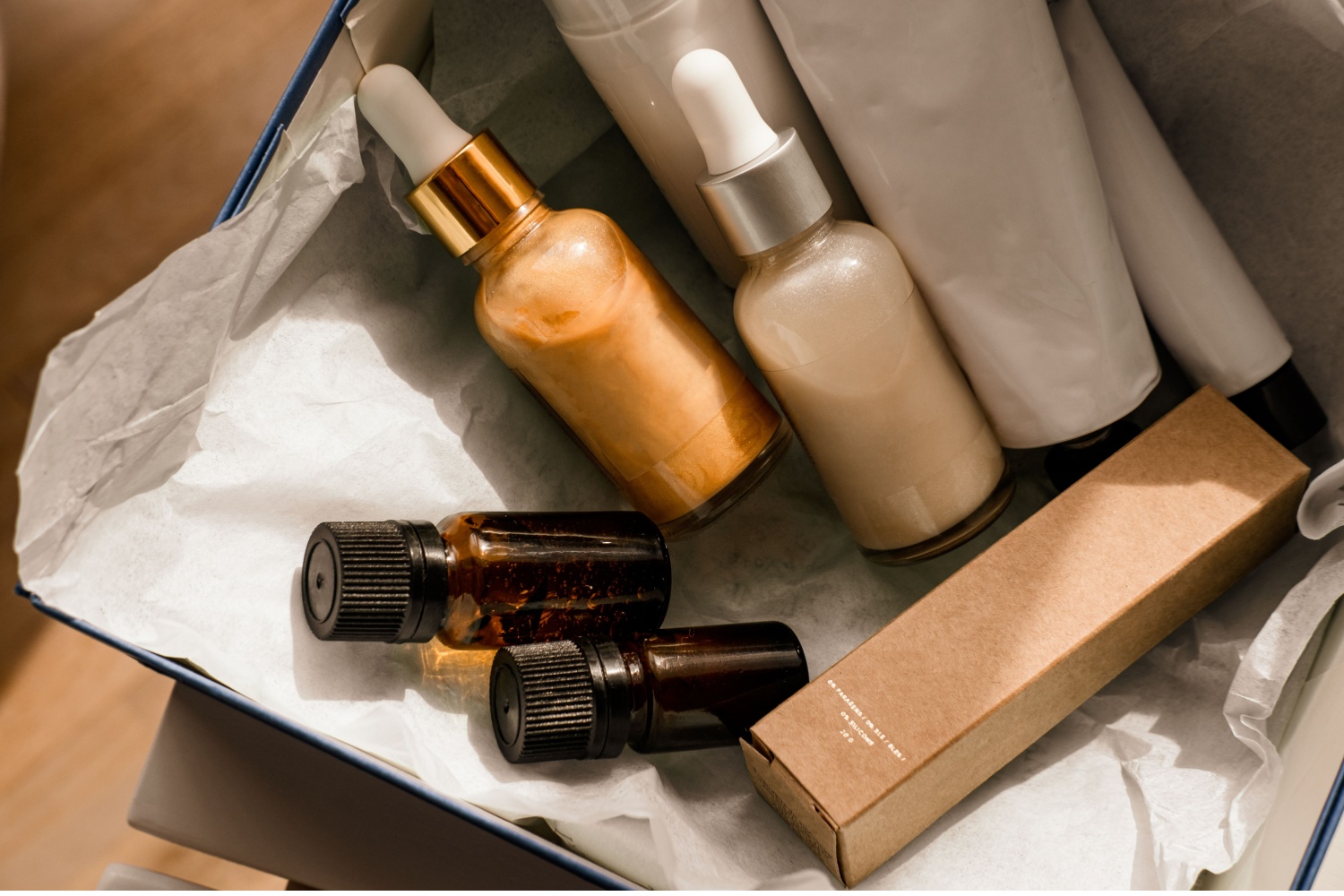In today’s world, the cosmetics industry is undergoing a significant transformation. The shift towards sustainability is more than just a trend; it’s a necessity. As we become more aware of the environmental impact of our actions, the importance of eco-friendly packaging for cosmetics becomes increasingly clear.
Eco-friendly cosmetic packaging is not just about reducing waste. It’s about creating a sustainable supply chain, from the raw materials used to the end product. It’s about considering the entire lifecycle of the product, from production to disposal. And it’s about making choices that are good for the planet and good for business.
The beauty industry has a significant role to play in this shift. With millions of beauty products sold every day, the potential for change is enormous. By choosing eco-friendly or recycled cosmetic packaging, companies can reduce their carbon footprint, minimize their use of single-use plastics, and contribute to a more sustainable future.
What Is the Environmental Impact of Traditional Versus Eco-Friendly Cosmetic Packaging?
With rising environmental awareness, consumers actively seek out sustainable and eco-conscious brands. A 2019 survey showed that 70% of women consider sustainability an important factor when purchasing cosmetics. Adopting eco-friendly packaging can thus boost brand loyalty and sales. It also future-proofs brands against tightening regulations on single-use plastics and sustainable manufacturing practices.
Traditional cosmetic packaging relies heavily on virgin plastics, glass, aluminum, and other non-renewable materials. For example, over 120 billion units of packaging are produced yearly for the global cosmetics industry alone. This has major environmental repercussions:
- Plastics – Most cosmetic plastics derive from fossil fuels and leach toxic chemicals. Less than 9% of plastic gets recycled. The rest ends up in landfills or the ocean, taking over 400 years to decompose. This releases harmful greenhouse gases and microplastics into the environment.
- Glass – Glass packaging has a significant carbon footprint due to high melting temperatures and energy use in manufacturing. The average glass bottle produces around 300g of CO2. Dangerous chemicals are also used in making cosmetic glass.
- Aluminum – Bauxite mining for aluminum releases toxic red mud into the environment. Aluminum production requires huge electricity use and emits greenhouse gases. Recycling rates are low as cosmetic aluminum is often coated, tinted, or mixed with other materials.
- Non-renewables – Most packaging derives from non-renewable sources like petroleum and natural gas. Extraction damages ecosystems and depletes limited resources for future generations.
In contrast, eco-friendly packaging has minimal environmental impact:
- Renewable plant-based plastics made from cornstarch, sugarcane etc. are biodegradable and compostable. This prevents plastic accumulation in landfills and oceans.
- Recycled materials like ocean plastics, PCR plastics and recycled aluminum have much lower carbon footprints from reuse rather than remanufacturing.
- Sustainably sourced paper/cardboard from recycled or Forest Stewardship Council (FSC) certified stocks has lower ecological impact.
- Reusable packaging systems based on refillable containers reduce waste. Brands like Lush offer in-store refills.
- Glass can be recycled efficiently when uncontaminated by other materials.
Each of these materials has its pros and cons, and the best choice will depend on the specific needs of the product and the brand. But by choosing eco-friendly cosmetic packaging, companies can reduce their environmental impact and meet the growing demand for sustainable products.
The Advantages and Challenges of Glass as an Eco-Friendly Packaging Material
Glass, as an eco-friendly cosmetic packaging material, offers a host of advantages. It’s 100% recyclable and can be reused indefinitely without losing its quality or purity. This makes it a great way to reduce the carbon footprint of cosmetic products. Moreover, glass packaging often adds a touch of luxury to beauty products, enhancing the user experience.
However, glass isn’t without its challenges. Its weight and fragility can increase transportation costs and the risk of product damage. It also requires more energy to produce than some other eco-friendly materials. Despite these challenges, many beauty brands are finding innovative ways to incorporate glass into their packaging strategies, balancing its environmental benefits with practical considerations.
Metal Containers: A Durable and Recyclable Option for Cosmetic Packaging
Metal containers, particularly those made from aluminum and stainless steel, are another excellent choice for eco-friendly cosmetic packaging. They’re durable, providing excellent protection for the product inside, and they’re fully recyclable, contributing to a circular economy.
Metal containers also have a high melting point, making them suitable for a wide range of cosmetic products. They can be used for everything from lip balms to creams, and their sleek, modern aesthetic appeals to many consumers.
However, like glass, metal containers come with their own set of challenges. They can be more expensive to produce than plastic containers, and they’re not suitable for all types of products. For example, certain skincare products may react with metal, affecting their quality and shelf life.
Despite these challenges, the benefits of metal containers often outweigh the drawbacks. They’re a durable, recyclable, and attractive option for eco-friendly cosmetic packaging.
Fiber Packaging: A Lightweight and Cost-Efficient Solution for Cosmetics
Fiber packaging, including cardboard and paperboard, is a lightweight and cost-efficient solution for eco-friendly cosmetic packaging. It’s versatile, suitable for a wide range of products, and can be customized to create unique, brand-specific designs.
Cardboard and paperboard are often made from recycled materials and are widely recyclable themselves. They’re also biodegradable, breaking down more quickly and completely than plastic materials. This reduces their environmental impact and makes them a popular choice for eco-friendly cosmetic packaging.
However, fiber packaging isn’t suitable for all types of cosmetics. It’s not as durable as glass or metal, and it doesn’t provide the same level of moisture protection. This can limit its use to certain types of products and require additional packaging elements, like inner liners or plastic bags, to ensure product integrity.
Despite these challenges, fiber packaging offers a compelling combination of sustainability, versatility, and cost-efficiency. It’s a testament to the fact that eco-friendly cosmetic packaging can be both practical and environmentally responsible.
How to Choose the Right Eco-Friendly Packaging for Your Cosmetic Products
Choosing the right eco-friendly packaging for your cosmetic products involves considering several factors. First, you need to think about the specific needs of your product. Does it require a certain level of moisture protection? Is it sensitive to light or heat? The answers to these questions will help guide your choice of packaging material.
Next, consider your brand’s values and image. Your packaging is an extension of your brand, and it should reflect your commitment to sustainability. This might mean choosing packaging materials that are recyclable, made from renewable resources, or have a low carbon footprint.
Finally, consider your customers. What are their expectations and preferences? Are they willing to pay a premium for eco-friendly packaging? Understanding your customers can help you make packaging decisions that will appeal to them and support your brand’s success.
Choosing the right eco-friendly packaging for your cosmetic products is a complex process, but it’s an essential part of creating a sustainable beauty brand. By considering the needs of your product, your brand, and your customers, you can make choices that are good for the planet and good for business.
The Role of Biodegradable Packaging in the Cosmetics Industry
Biodegradable packaging is gaining traction in the cosmetics industry as a viable solution to the plastic waste problem. Unlike traditional plastic, biodegradable materials such as polylactic acid (PLA), cornstarch packaging, and even innovative seaweed packaging, break down naturally over time, reducing their environmental impact.
Biodegradable packaging is particularly appealing because it doesn’t require consumers to change their disposal habits. Instead of needing to be recycled, these materials can be composted, making them a convenient and eco-friendly option.
However, it’s important to note that not all biodegradable materials are created equal. Some require specific conditions to decompose effectively, and others may leave behind microplastics or other harmful residues. Therefore, it’s crucial to choose high-quality biodegradable packaging that’s certified to break down safely and completely.
The Interaction Between Cosmetic Products and Eco-Friendly Packaging Materials
It’s crucial to evaluate interactions between cosmetic formulas and eco-friendly packaging. Certain materials may:
| Interaction Type | Material | Impact | Solution |
| Absorb contents | Paper-based packaging | Draws out moisture and oils | Use plastic liners |
| Leach chemicals | Recycled plastics | Releases bisphenols, phthalates, and other harmful substances | Thorough compatibility testing |
| React with contents | Metal or aluminum packaging | Acids or antioxidants in the formula may react | Consider formula pH, oil content, preservatives, natural versus synthetic ingredients |
| Allow air exposure | Breathable materials like wood | Allows oxygen exchange that degrades fragile oils and vitamins | Consider packaging thickness, coatings, barriers, opacity |
| Permit light exposure | Glass and clear plastics | Necessitates added UV blocking | Use opaque PCR plastics |
| Retain odors | Recycled plastic packaging | May retain scents that taint unfragranced products | Thorough compatibility testing |
| Considerations for Compatibility Testing |
| Formula pH, oil content, preservatives, natural versus synthetic ingredients |
| Packaging thickness, coatings, barriers, opacity |
| Expected shelf life: 6 months, 1 year, 2+ years |
| Shock, vibration, and temperature during distribution |
Innovative Examples of Eco-Friendly Packaging in the Cosmetics Industry
Innovation is key in the shift towards eco-friendly cosmetic packaging. Many brands are thinking outside the box, creating packaging solutions that are not only sustainable but also unique and visually appealing.
For instance, some companies are using bamboo packaging, which is not only renewable but also adds a touch of natural elegance to the product. Others are using cushioning made from cornstarch or algae, which can be composted after use.
Another innovative approach is the use of refillable containers. These containers are designed to be durable and long-lasting, and customers can purchase refills instead of new products when they run out. This reduces the amount of packaging waste and encourages customers to engage with the brand on a long-term basis.
What Are the Trends in Eco-Friendly Packaging for Cosmetics in 2023?
As we look ahead to 2023, several trends are shaping the future of eco-friendly packaging for cosmetics. One of the most significant is the move towards transparency. Consumers want to know more about the products they’re buying, including how they’re packaged. Brands are responding by providing more information about their packaging materials and sustainability efforts.
Another trend is the use of new materials. From seaweed packaging to biodegradable polymers, companies are exploring a range of innovative materials that offer sustainability benefits. These new materials are not only eco-friendly but also offer unique aesthetic possibilities, allowing brands to stand out on the shelves.
Finally, we’re seeing a trend towards minimalism in packaging design. This involves using less material overall, reducing waste, and focusing on the essentials. It’s a trend that aligns well with the values of sustainability and is likely to continue in the coming years.
Regulations and Standards for Eco-Friendly Packaging in the Cosmetics Industry
As the cosmetics industry moves towards more sustainable practices, it’s important to understand the regulations and standards that apply to eco-friendly packaging. These guidelines ensure that packaging is truly sustainable and that claims made by brands are accurate and verifiable.
Regulations vary by country and region, but they generally cover aspects such as the use of certain materials, recycling and composting capabilities, and the accuracy of environmental claims. For example, if a brand claims that its packaging is biodegradable, it must meet specific standards for biodegradability.
In addition to following regulations, many brands choose to pursue certifications from independent organizations. These certifications provide third-party verification of a brand’s sustainability claims and can help build trust with consumers.
Navigating these regulations and standards can be complex, but it’s an essential part of creating truly eco-friendly cosmetic packaging. By understanding and adhering to these guidelines, brands can ensure their packaging is as sustainable as they claim.
How Does Eco-Friendly Packaging Contribute to a Brand’s Image and Customer Loyalty?
Eco-friendly packaging is more than just a sustainable choice; it’s also a powerful branding tool. It sends a clear message about a brand’s values and commitment to sustainability, which can resonate with consumers and build brand loyalty.
Today’s consumers are more informed and conscious than ever before. They’re looking for brands that align with their values and are making a positive impact on the world. By choosing eco-friendly packaging, brands can demonstrate their commitment to sustainability and attract these conscious consumers.
Moreover, eco-friendly packaging can enhance the customer experience. Innovative materials and designs can make unboxing a product more enjoyable, and knowing that the packaging is sustainable can make consumers feel good about their purchase.
In this way, eco-friendly packaging can contribute to a brand’s image and customer loyalty, making it a win-win for businesses and the environment.
The Role of Technology in Enhancing Eco-Friendly Packaging Solutions
In the quest for sustainability, technology plays a pivotal role in the cosmetics industry. From the design phase to production and distribution, technological advancements are enabling brands to create more eco-friendly packaging solutions.
Design and Prototyping
Modern design software allows brands to create virtual prototypes, reducing the need for physical samples. This not only saves materials but also enables designers to experiment with different eco-friendly materials and structures. 3D printing technology further supports this by allowing rapid prototyping using sustainable materials.
Production Efficiency
Automation and AI-driven manufacturing processes are optimizing production lines, reducing waste, and enhancing efficiency. By precisely controlling material usage and recycling excess, technology ensures that eco-friendly materials are used to their fullest potential.
Material Innovation
Technological research is leading to the development of new sustainable materials. From bioplastics derived from algae to innovative recycling processes that turn waste into reusable materials, technology is at the forefront of material innovation.
Supply Chain Transparency
Blockchain and other tracking technologies are providing unprecedented transparency in the supply chain. Consumers can trace the origin of the materials used in their products, ensuring that they meet sustainability standards.
Consumer Engagement
Augmented reality (AR) and other interactive technologies are allowing brands to engage with consumers in unique ways. For example, AR can be used to provide information about the sustainability of a product’s packaging, educate consumers and reinforcing a brand’s commitment to eco-friendly practices.
Closing Thoughts: The Long-Term Benefits of Adopting Eco-Friendly Packaging for Cosmetics
Adopting eco-friendly packaging for cosmetics is not just a trend; it’s a long-term investment in the future of our planet and the sustainability of the beauty industry. While it may require an upfront investment and a shift in business practices, the long-term benefits are significant.
Firstly, eco-friendly packaging can help reduce a brand’s environmental impact by minimizing waste, reducing carbon emissions, and promoting a circular economy. This is not just good for the planet; it’s also good for business. Consumers are increasingly seeking out brands that prioritize sustainability, and eco-friendly packaging can help attract these conscious consumers.
Secondly, eco-friendly packaging can enhance the customer experience. From the tactile feel of bamboo to the sleek look of glass, eco-friendly materials can add a touch of luxury to beauty products. They can also make consumers feel good about their purchase, knowing that they’re supporting a brand that cares about the environment.
Finally, eco-friendly packaging can help future-proof a brand. As regulations tighten and consumer expectations evolve, brands that have already made the shift towards sustainability will be ahead of the curve.
This is where Cosmopacks comes in. Our experts are here to help customers choose the most suitable and cost-effective eco-friendly packaging for their projects. We’re committed to proceeding in an eco-friendly way that benefits both society and our customers. With our expertise and dedication to sustainability, we can guide you through the process of adopting eco-friendly packaging, making it a smooth and rewarding journey.
Adopting eco-friendly packaging for cosmetics is a smart, sustainable, and strategic move. It’s an investment in the future of our planet, the beauty industry, and the success of your brand. As we move forward, let’s continue to innovate, inspire, and make choices that are good for the planet and good for business. Because at the end of the day, sustainability is the most beautiful thing of all. And with Cosmopacks by your side, you’re well-equipped to make that transition.




